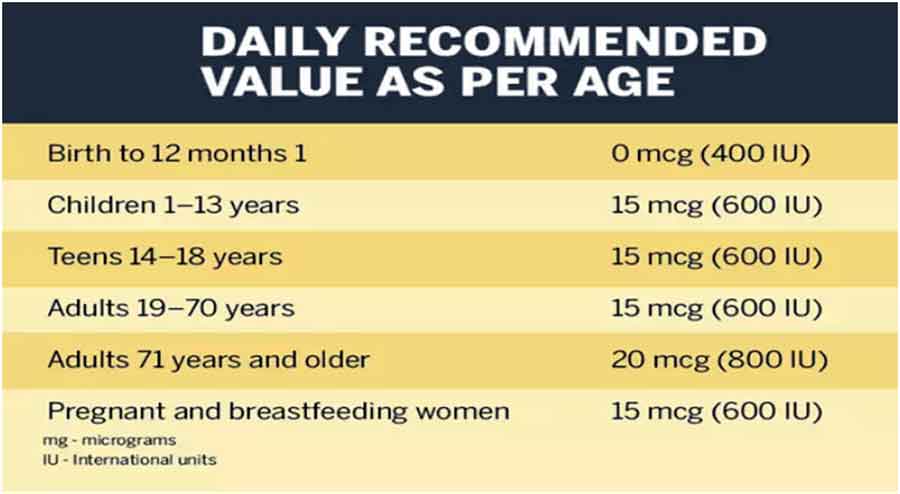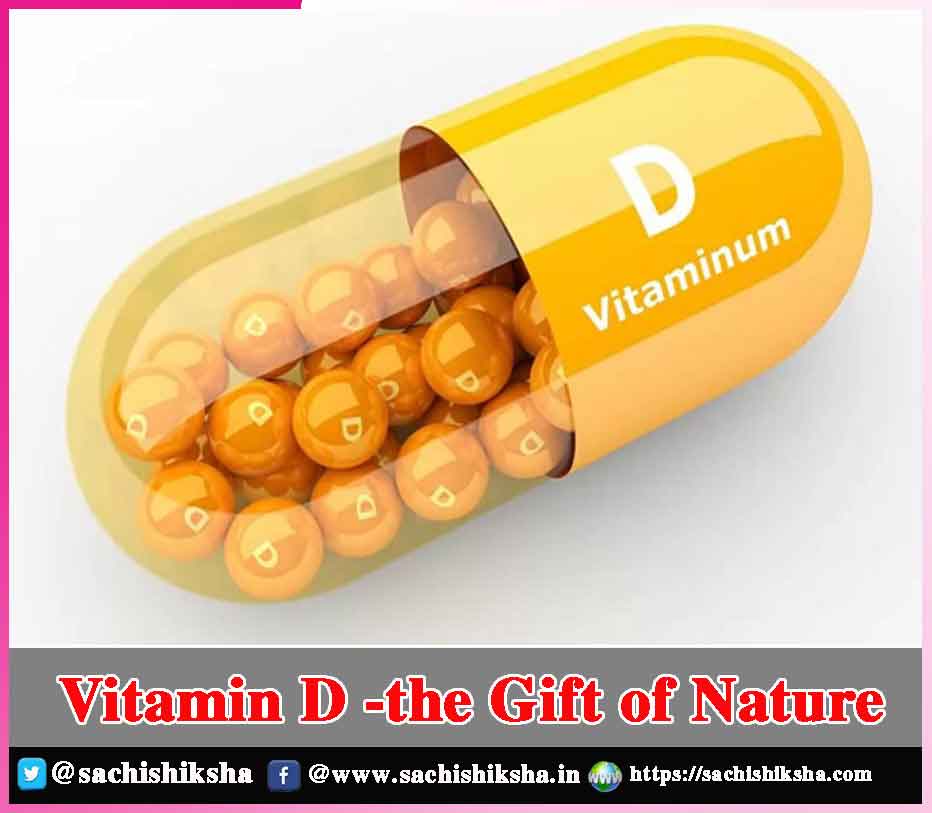Vitamin D -the Gift of Nature
Introduction: Is there Vitamin D in your food? Most of the nutrients we need are obtained through diet. Nutrients including vitamins, minerals, proteins, lipids, and carbs may all be obtained from a variety of sources. The only nutrient that is solely available naturally is vitamin D. It is an unwanted gift from nature, vitamin D.
Also Read:
- Avoid Eating at Night
- PROTEIN- WHAT & WHY A MUST
- IMPORTANCE OF NUTRITIOUS DIET
- Summer Fruits
- Types of Diet to Follow
Table of Contents
Vitamin D is Essential for Human Body:

Moreover, research in the lab demonstrates that vitamin D helps lessen inflammation, manage infections, and slow the growth of cancer cells. Scientists are currently researching other potential activities for vitamin D, which has receptors in many bodily organs and tissues and suggests crucial implications beyond bone health.
Sources of Vitamin D:
Although vitamin D is known as the “sunshine vitamin,” it may be obtained from sunlight. Sunlight’s UV rays aid in the production or synthesis of vitamin D beneath the skin. Most people can produce all the vitamin D they require from sunshine between late March and early April and the end of September.
Yet, a lot of individuals don’t get enough sun exposure because they spend most of their time indoors or because they reside in areas with little winter sunshine. Also, those with darker skin often have lower amounts of vitamin D in their blood because the melanin pigment serves as a shade and inhibits the synthesis of vitamin D. Vitamin D is also found in some foods, such as
- Fortified foods – such as some fat spreads and breakfast cereals.
- Orange juice fortified with vitamin D.
- Dairy and plant milks fortified with vitamin D.
- White beans etc.
Another source of vitamin D is dietary supplements. During autumn and winter, the sun will not be the major source of Vitamin D. And also, some people couldn’t expose to sunlight for longer time. In such cases, supplements will be the solution. Because it is challenging to consume adequate through meals. There are two types of vitamin D supplements: vitamin D2 (also known as ergocalciferol or pre-vitamin D) and vitamin D3 (also known as cholecalciferol).
Suggested Amount on Daily Basis:
The amount of vitamin D required everyday is 15mcg to 20mcg (mcg – micrograms. Sometimes the amount of vitamin D is expressed as International Units (IU). 1 microgram of vitamin D is equal to 40 IU. So, 15 micrograms of vitamin D are equal to 600 IU.)
RDA: For people aged 19 and older, 600 IU (15 mcg) for men and women, and 800 IU (20 mcg) for those over 70 is recommended.
“AMRITA ALSO GNAWS IF IT IS EXCEEDED”
According to the above phrase, there is a limit in consuming vitamin D.
UL: The highest daily consumption that is unlikely to have a negative impact on health is known as the Tolerable Upper Intake Limit (UL). For adults and kids aged 9 and older, the UL for vitamin D is 4,000 IU (100 mcg).
Benefits of Vitamin D:

Although clinical trials that give patients vitamin D supplements to treat a particular ailment are still inconclusive, observational studies have found a clear correlation between lower prevalence of several diseases in populations that live in sunny regions or have higher blood levels of vitamin D. This might be as a result of various study designs, variations in participant doses, and variations in vitamin D absorption rates among various ethnicities.
- It helps in prevention of cancer.
- Reduces the rate of heart diseases.
- Increases the bone health and muscle strength.
- Rises the level of immune function.
- Eliminates the risk of premature death.
- Helps with Cognitive decline.
Effects of Vitamin D:
A shortage of vitamin D in the diet, poor absorption, or a requirement for greater quantities due to a metabolic condition can all lead to vitamin D insufficiency. If one is not ingesting enough vitamin D and does not obtain enough UV sun exposure over an extended period (see section above), a deficit may emerge.
A deficit is more likely to occur in people who cannot handle or avoid eating dairy products, such as individuals who are vegan or have lactose intolerance. The people who have undergone any surgery in upper part of small intestine, may have vitamin D deficiency as upper part of small intestine is the part which absorb vitamin D. Whoever has the intolerance to dairy products and who couldn’t digest fat may face the deficiency. Long-term vitamin D deficiency-related conditions include:
Rickets is a disorder characterised by soft bones and skeletal abnormalities in newborns and young children that results from the inability of bone tissue to solidify.
Those who suffer from osteomalacia have weak, brittle bones that can be strengthened with dietary supplements. This is not osteoporosis, which causes the bones to become porous and brittle and is an irreversible disorder.
The low amounts of the vitamin found in food are unlikely to reach a toxic level, and a high amount of sun exposure does not lead to toxicity because excess heat on the skin prevents D3 from forming. Symptoms of toxicity:
- Anorexia.
- Weight loss.
- Irregular heart beat.
- Hardening of blood vessels and tissues due to increased blood levels of calcium, potentially leading to damage of the heart and kidneys.
- Let us caption our Instagram post,
“Sunkissed me and vitamin D”













































